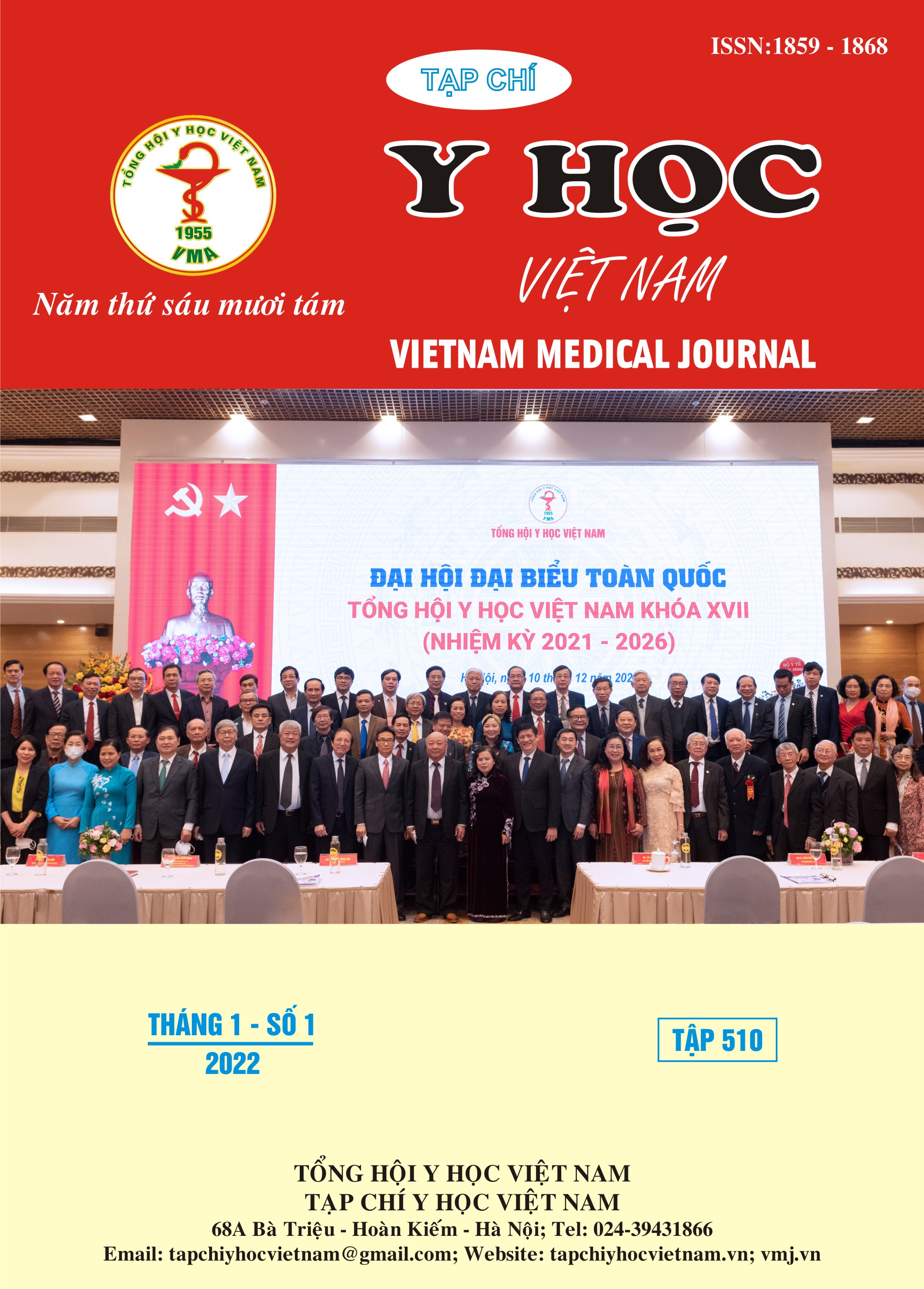CHARACTERISTICS OF BACTERIUM IN GENERALIZED AGGRESSIVE PERIODONTITIS
Main Article Content
Abstract
Periodontal disease is an infection caused by the accumulation of bacteria in plaque under the gums. Aggressive periodontitis is a disease that destroys periodontal tissue, causing clinical attachment of loss and rapid alveolar bone loss, less corresponding to local inflammation. The disease is common in healthy young people with a low incidence. Periodontal tissues has many causes, including some specific pathogenic bacteria such as Aggregatibacter actynomycestemcomytan, porphymonas gingivalis, parvimonas micra.... Identification of some bacteria causing periodontal disease that Generalized aggressive periodontitis in a group of patients aged 20 - 45 years, determined by anaerobic bacterial culture and polymeraase chain reaction (PCR) techniques. All 35 patients were diagnosed with Generalized aggressive periodontitis and were sampled for subgingival plaque that was detected by anaerobic culture and PCR techniques to identify some pathogenic bacteria. The percentage of bacteria identified after performing anaerobic culture, Realtime polymeraase chain reaction technique: Aggregatibacter actinomycetemcomitans 11,3%, Porphymonas gingivalis 0%, F.nucleatum 0%, Tannerella forsythia 5,7%, Parvimonas micra 11,4%, Veillonella parvula 45,7%, Campylobacter showae 5,7%, Prevotella intermedia 22,9%, Trenponema dencota 11,4%. There was little association between the prevalence of anaerobic bacteria and oral hygiene status and a high degree of association in the severity of the patient's disease.
Article Details
Keywords
Generalized aggressive periodontitis
References
2. Olanrewaju Onabolu et al, 2015, Periodontal progression based on radiographic records: An observational study in chronic and aggressive periodontitis. J Dent. 2015 Jun;43(6):673-682.
3. Eija Kononen et al, (2014). Microbiology of aggressive periodontitis Periodontology 2000, Vol. 65, 46–78.
4. Paul M, 2005. Prevalence analysis of putative periodontal pathogens in patients with aggressive periodontitis and healthy elderly. A molecular study. Dissertation. Doctor of Medicine. University Medicine Berlin.
5. Cristiano Susin et al, 2014. Epidemiology and demographics of aggressive periodontitis. Periodontology 2000, Vol. 65, page 27–45
6. SusanneSchulz et al (2019), Comparison of the oral microbiome of patients with generalized aggressive periodontitis and periodontitis-free subjects, Archives of Oral Biology, Volume 99, March 2019, Pages 169-176
7. Marıa Mınguez et al (2014). Characterization and serotype distribution of Aggregatibacter actinomycetemcomitans isolated from a population of periodontitis patients in Spain. Archives of oral biology. 59 . 1359 – 1367.
8. Heller D et al (2011), Impact of systemic antimicrobials combined with anti-infective mechanical debridement on the microbiota of generalized aggressive periodontitis: a 6-month RCT. J Clin Periodontol: 38: 355–364.
9. Rylev M et al (2011). Microbiological and immunological characteristics of young Moroccan patients with aggressive periodontitis with and without detectable Aggregatibacter actinomycetemcomitans JP2 infection. Mol Oral Microbiol: 26.


